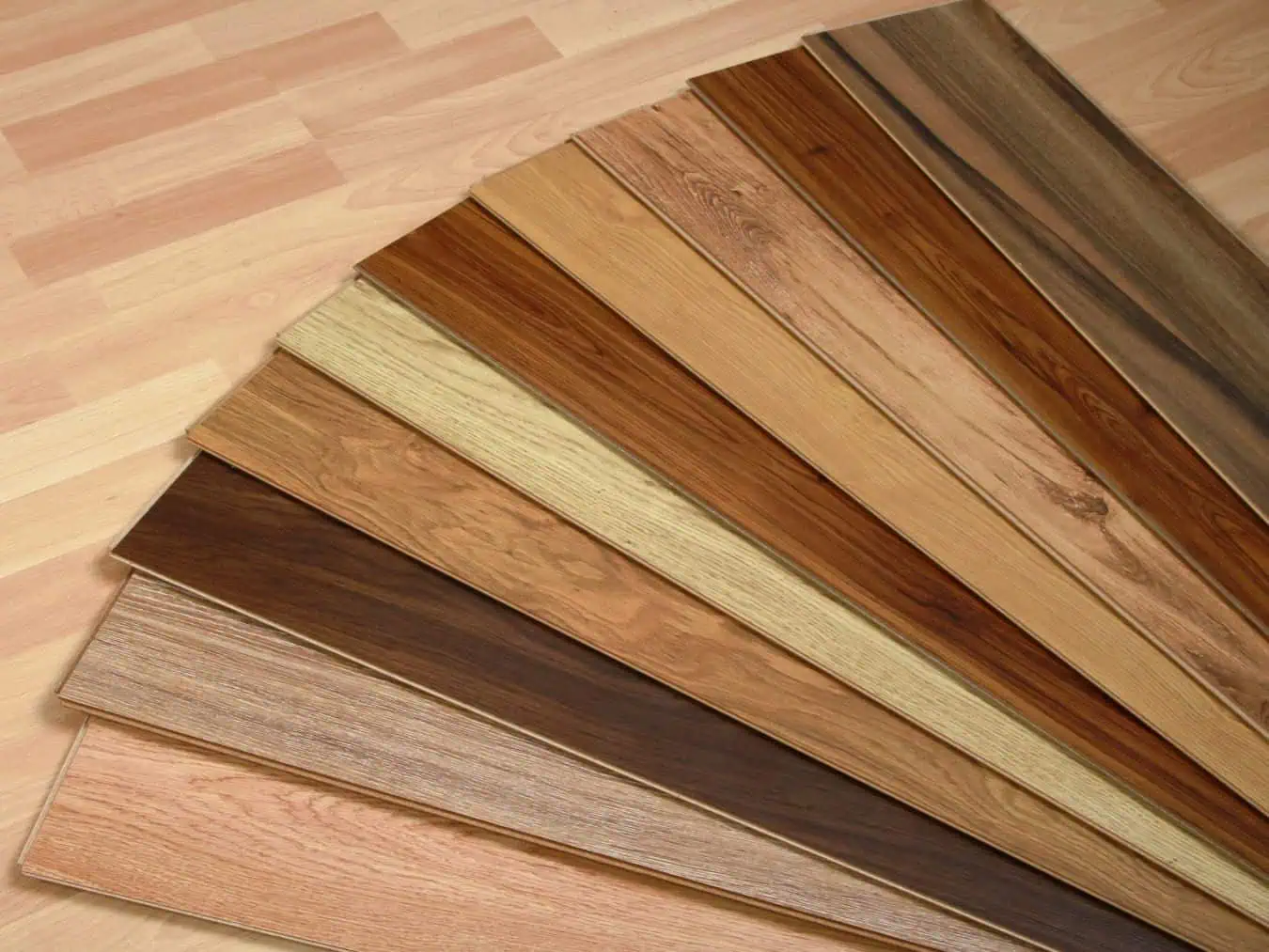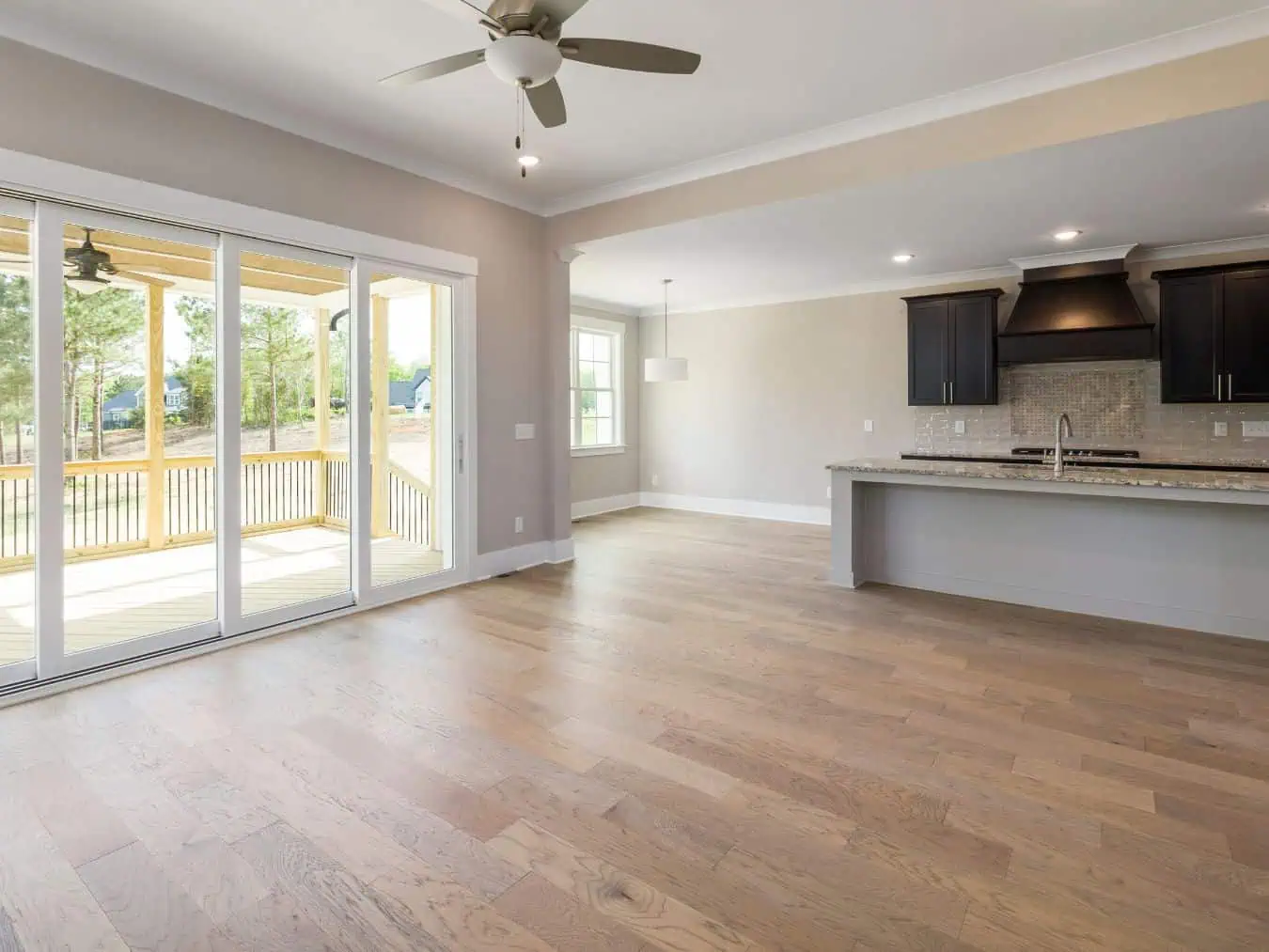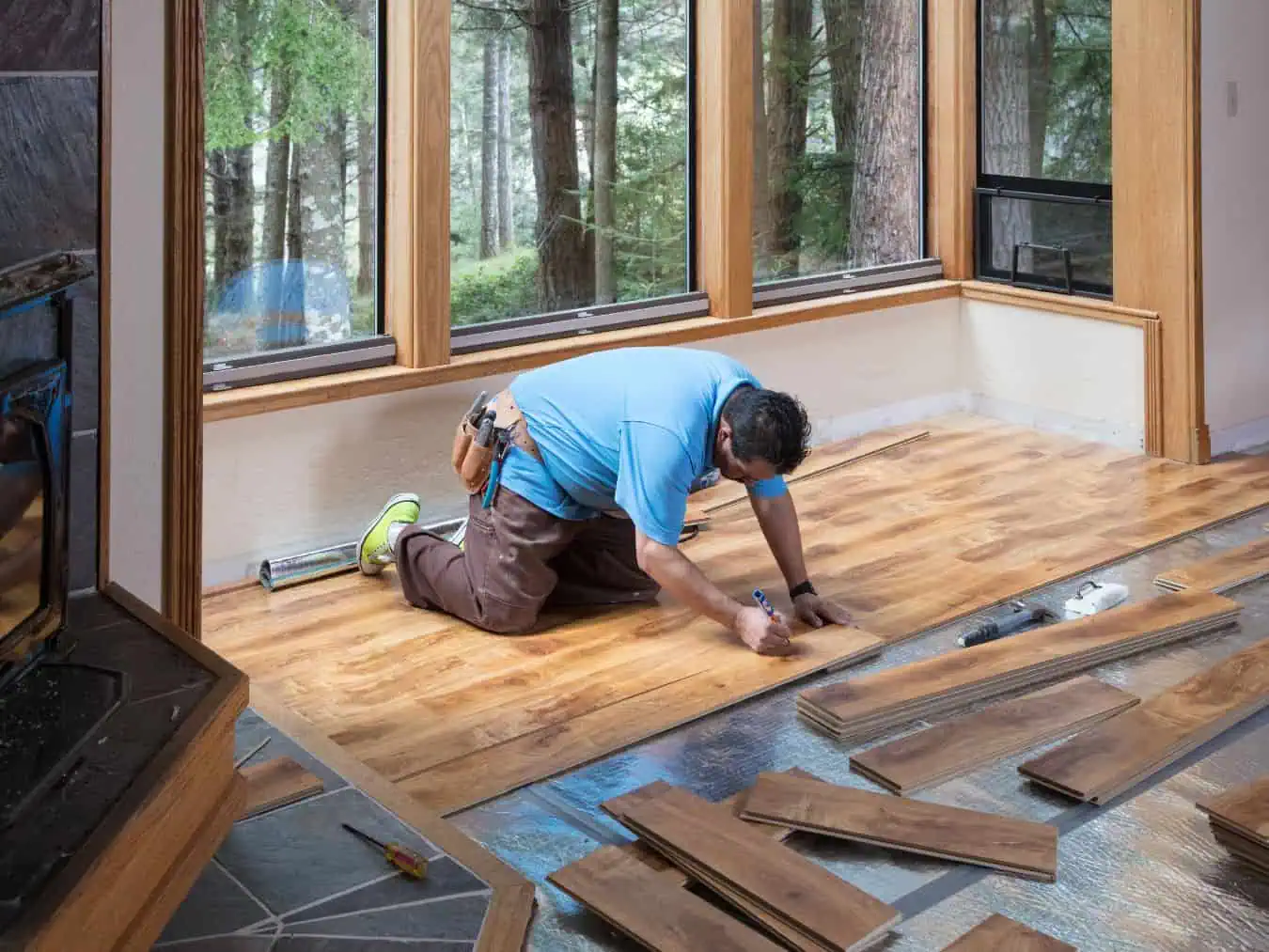Why Your Thick Engineered Oak Flooring Feels Bouncy - And What to Do About It
Discover why your engineered oak flooring might feel springy underfoot and learn how the thickness of both the boards and wear layer significantly impacts floor stability. The right finish can enhance the visual appeal and durability of your flooring. An oiled finish, for example, highlights the wood's grain and character while providing durability and ease of maintenance. Find practical solutions to address bounciness and make informed decisions for your next flooring project.
Understanding Engineered Wood
Engineered wood flooring is crafted from multiple layers of wood, with a top layer of solid wood and a base layer of plywood or other materials. This construction method provides extra stability and durability, making engineered wood flooring less prone to shrinkage and expansion compared to solid wood.
The multiple layers of engineered wood flooring are designed to withstand various environmental conditions, ensuring that the floor remains stable and durable over time. Available in various thicknesses, including 14mm and 20mm, engineered wood flooring can be tailored to suit different installation methods and subfloors.
The top layer of engineered wood flooring can be made from various types of wood, such as oak, maple, and cherry, offering a range of options to match different styles and decors. This versatility makes engineered wood flooring a great choice for high-traffic areas, as it is more durable and resistant to scratches and wear than solid wood flooring.
Installation of engineered wood flooring is relatively straightforward, as it can be nailed down, glued down, or installed as a floating floor. This flexibility allows for easy installation in various settings, making it a popular choice for both residential and commercial properties.

The Science Behind Bouncy Engineered Flooring
How Engineered Oak Flooring Is Constructed
Unlike solid hardwood, engineered oak flooring consists of multiple layers. The top layer (wear layer) is genuine oak veneer that has been sanded to prepare it for additional coatings, such as oils or lacquers, enhancing its appearance and durability. The core comprises several layers of plywood or high-density fiberboard (HDF) arranged in opposing directions. This cross-layered construction is specifically designed to resist the natural expansion and contraction that occurs with temperature and humidity changes.
Each plank in engineered oak flooring undergoes unique manufacturing processes that enhance its durability and maintenance. These processes, including hand scraping and double brushing, contribute to the visual appeal and character of the flooring in various environments.
The total thickness of engineered oak flooring typically ranges from 10mm to 22mm, with wear layers varying from 0.6mm to 6mm. Each component plays a crucial role in the floor’s overall performance and stability.
Why Thickness Matters for Floor Stability
The thickness of engineered oak flooring directly impacts its rigidity and ability to withstand pressure. Thinner boards (10-14mm) have less material to resist force, making them more prone to flexing when weight is applied. This flexing creates the bouncy sensation you might be experiencing.
A medium thickness, such as 14mm, offers a balanced option that combines durability and price, making it suitable for various home applications. Additionally, this medium thickness allows for additional sanding over time, enhancing longevity and maintenance benefits.
The relationship between thickness and stability follows basic physics principles: a thicker board provides greater resistance to bending forces. When you walk on engineered flooring that’s too thin for the application, it can compress slightly between joists or subfloor imperfections, creating that unwanted springy feeling. A thicker wear layer, like 4mm, can better withstand the wear and tear of daily use compared to thinner options, ensuring the flooring maintains its aesthetic appeal and durability.
Common Causes of Bouncy Engineered Oak Floors
Insufficient Total Board Thickness
One of the primary causes of bouncy engineered oak floors is simply insufficient total board thickness for the specific installation environment. Compared to solid oak flooring, which offers natural durability and customization options, engineered oak flooring should generally be at least 15mm thick for residential spaces with standard joist spacing (40-60cm). High-traffic areas or spaces with wider joist spacing may require 18-22mm boards for proper stability.
When flooring is too thin relative to the span it needs to cover, it lacks the structural integrity to remain rigid under pressure. This is particularly noticeable in areas where people frequently walk or where heavy furniture sits.
Inadequate Wear Layer Thickness
The oak wear layer doesn’t just determine how many times your floor can be refinished—it also contributes to overall stability. Thinner wear layers (0.6-2mm) provide less structural support than thicker options (3-6mm). Premium engineered oak flooring with substantial wear layers will typically feel more solid underfoot, similar to traditional hardwood.
A floor with a thin wear layer may look beautiful initially but can feel less substantial when walked upon. This is especially true when combined with a thinner overall board construction. Features like Brushed and Natural Oiled or Celtic Character Rustic finishes enhance the natural grain features and imperfections in the wood, adding character and aesthetic qualities that contribute to the overall allure of the flooring options.
Subfloor Issues and Installation Problems
Even the highest quality engineered oak flooring can feel bouncy if installed over an uneven or unstable subfloor. Pre-finished oak floors come covered with a factory-applied finish, while unfinished oak boards are not covered and require post-installation treatment. Common subfloor issues include:
-
Uneven concrete or wooden subfloors with high and low spots
-
Excessive spacing between floor joists
-
Damaged or warped subflooring materials
-
Inadequate subfloor thickness for the span
Having the right tools before starting the install process is crucial to ensure a smooth and successful installation.
Proper installation is equally critical. Insufficient acclimatization before installation, improper adhesive application, or failing to follow manufacturer guidelines can all contribute to stability issues.
Moisture and Environmental Factors
Engineered wood floors, including engineered oak flooring, are designed to handle moisture better than solid hardwood, but they’re not immune to environmental effects. Excessive moisture can compromise the structural integrity of the boards, leading to warping or weakening of the core layers. This is particularly problematic in:
-
Basements or ground floors with inadequate moisture barriers
-
Areas with high humidity levels
-
Rooms with significant temperature fluctuations
-
Spaces where water spills are common (kitchens, bathrooms)

How to Choose the Right Thickness for Your Engineered Oak Floor
Assessing Your Space and Requirements
Selecting the appropriate thickness for engineered oak flooring depends on several factors specific to your home and the desired style:
-
Subfloor type: Concrete subfloors generally require thicker engineered flooring than plywood subfloors for thermal insulation and stability.
-
Joist spacing: Wider joist spacing necessitates thicker flooring to prevent flexing between supports.
-
Traffic levels: High-traffic areas benefit from thicker boards that can withstand more pressure and wear.
-
Installation method: Floating installations typically require thicker boards than fully glued-down methods for adequate stability.
-
Underfloor heating: If you have underfloor heating, you’ll need to balance thermal conductivity with adequate thickness (typically 14-18mm works well).
Additionally, the texture of the wood can significantly enhance the appearance and feel of the flooring. Different finishes, such as hand scraped and double brushed, provide a distinct visual and tactile quality that adds depth and warmth to the flooring, making it a desirable choice for both beauty and durability.
Recommended Thickness Guidelines
For most residential applications, follow these general guidelines:
-
Light-use bedrooms: Minimum 14mm total thickness with 2mm wear layer
-
Living rooms and hallways: 15-18mm total thickness with 3-4mm wear layer
-
High-traffic areas and open-plan spaces: 18-22mm total thickness with 4-6mm wear layer
-
Commercial spaces: 20mm+ total thickness with 6mm wear layer
Oiled oak flooring finishes are particularly popular for their ability to enhance the wood's natural grain and texture, making them a durable and attractive option for various spaces.
Solutions for Already Installed Bouncy Floors
Diagnosing the Specific Cause
Before attempting any fixes, it’s important to identify exactly why your engineered oak floor feels bouncy. Sanding is often necessary for preparing and maintaining engineered wood flooring, ensuring a smooth and even surface.
Lacquer is commonly used in pre-finished engineered oak flooring, providing a durable and visually appealing finish. Multiple coats of lacquer enhance durability and shine, making the flooring easy to maintain and suitable for various interior styles, especially in spaces with low natural light.
-
Perform the bounce test: Walk across different areas of the floor, noting where the bounce is most pronounced. This can help identify if the issue is localized or widespread.
-
Check for movement between boards: Excessive movement between boards might indicate installation issues rather than thickness problems.
-
Inspect the subfloor: Where possible, examine the subfloor for signs of damage, moisture, or unevenness.
-
Measure joist spacing: In suspended floors, check whether joist spacing exceeds the recommended span for your flooring thickness.
Preventing Bounce in New Flooring Projects
Selecting Quality Engineered Oak Flooring
When shopping for new engineered oak flooring, prioritize these factors to avoid bounce issues:
-
Appropriate total thickness: Choose boards that match your specific needs based on the guidelines above.
-
Substantial wear layer: Opt for at least a 3mm wear layer for residential applications where stability is a concern.
-
Core construction quality: Look for cores made with multiple layers of high-quality plywood rather than cheaper HDF alternatives.
-
Manufacturing standards: Select products from reputable manufacturers who adhere to European standards for engineered flooring.

Professional Installation Considerations
Even the highest quality engineered oak flooring, which enhances the natural appearance and grain features through specific finishes like Brushed and Natural Oiled and Double Brushed Dark Oiled, can develop bounce issues if improperly installed. Consider these professional installation best practices:
-
Proper acclimatization: Allow flooring to adjust to room conditions for at least 48 hours before installation.
-
Subfloor preparation: Ensure the subfloor is clean, dry, level, and structurally sound.
-
Appropriate underlay: Select underlay materials that provide the right balance of cushioning and support.
-
Correct adhesive application: For glue-down installations, use manufacturer-recommended adhesives applied according to specifications.
-
Expansion gaps: Leave appropriate expansion space around the perimeter to prevent buckling.
Conclusion: Achieving the Solid Feel You Desire
The stability and solid feel of your engineered oak flooring largely depends on selecting the appropriate thickness for your specific situation. By understanding how total board thickness and wear layer thickness impact performance, you can make informed decisions that result in beautiful, stable flooring that stands the test of time.
If you're experiencing bounce in an existing floor, identifying the root cause is the first step toward finding an effective solution. For new projects, investing in quality engineered oak flooring with adequate thickness will help ensure your floors feel as substantial as they look.
Ready to explore engineered oak flooring options that provide the perfect balance of beauty and stability? Browse Lumber King's selection of premium engineered oak flooring, available in various thickness profiles to suit any application. Order our free king-size samples to experience the quality and stability firsthand before making your decision.





















